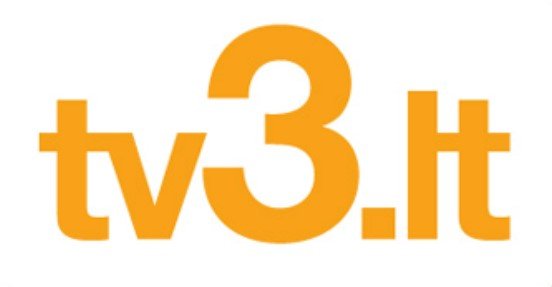
Immigration to Lithuania in growing for the fourth month in a row now: more people arrive in Lithuania than leave it. This is to celebrate, but at the same time saddening because only a little over half of those arriving in Lithuania from abroad are returning Lithuanians, the rest are temporary workers from Ukraine or Belarus.
Specialists say that Immigration to Lithuania is a good thing, but it does not resolve the country’s long term economic problems, nor does it improve life in the country. Statistics Lithuania has reported that in January-May 2019, 18,893 individuals arrived to work in Lithuania, which is 7,016 people more than the same period last year. More than half of the arrivals are returning Lithuanian citizens. Over the same period, almost 16 thousand citizens left the country, almost 25% more than the same period last year, Jūratė Važgauskaitė writes in TV3.lt
According to the Department of Statistics, people of various age groups leave Lithuania, but it is mostly young individuals under the age of 30. It is also young, working-age people that arrive most often, most of them being from neighbouring countries.
Builders and butchers arriving
The head of the Migration Department Evelina Kudzinskaitė says that the scale of immigration to Lithuania grows every year.
“Just over the first five months of this year, we received 30% more applications for residence permits in Lithuania. Employees arrive, mostly they are from Ukraine, representatives of professions we are lacking. We have been observing this trend for three years now, employers cannot find staff in Lithuania and bring in people from abroad. Mostly we have long haul drivers, builders, welders, and butchers arriving. Without a doubt, the majority of those arriving are male,” E. Kudzinskaitė said.
She assured that workers from abroad come to Lithuania for differing periods, some depart quickly, some keep replacing their permits and continue living here.
“High qualification workers, such as those from the IT sector or university lecturers, bring their families together with them,” the head of the Migration Department said.
The main body of workers is mobile, migrating employees. They work here and return to, say Ukraine or Belarus. The lion’s share of immigrants to Lithuania is made up of arrivals from Ukraine, Belarus, and Russia. Far fewer arrive from other countries, with a few arriving from Tajikistan, the Philippines, and other countries.
Nothing to celebrate because the wrong ones arrive
Meanwhile, representative to the Lithuanian Business Employers’ Confederation Danas Arlauskas is not particularly celebrating positive immigration to Lithuania because according to him, we must consider all the details.
“I even see politicians celebrating how immigration to Lithuania has been stopped. Yes, the trend is good, but the essential question is how it works out in practice. Who are those, who arrive? We have to focus on arrivals, who have skills, these should intermediate qualification specialists. If we have arrivals of people without specialty, without skills, they come here because they disliked something somewhere, these things shouldn’t be celebrated much by us,” the employers’ representative said.
He stated that in 2025, we will face the largest intermediate qualification employee deficit in the European Union. We will lack people, who create added value because Lithuania is 60% dependent on exports.
“Thus, we need people, who are specialists. Of course, let those without skills arrive, but the current teaching and re-qualification system is unprepared for an increased influx of such people. If it is emigrants returning, who chopped chickens’ heads abroad, then, you know, the level of innovation in Lithuania is different. We are beginning to exceed the countries where Lithuanians left to work. Such returnees will not create much-added value, quite the contrary, they could become social dependents,” D. Arlauskas mused.
Help from the State needed for integration
The employers have been signalling to the state that we must ensure integration through re-qualification, arrivals should be adapted to the Lithuanian market.
“We need people, who could work in large companies and create added value, while the construction sector building more buildings, that’s… As long as it is European or emigrants’ money, it’s all good, but what next? The same applies to carriers. If the mobility package is approved, our logistics sector will contract rapidly,” the employers’ representative spoke on trends.
According to him, Ukrainians working in Lithuania are seconded here, paying taxes in Ukraine and also sending what they make to Ukraine. Thus, they increase profit margins for companies, but everything circulates in the internal economy through internal consumption. It does not create long term value because the money leaves Lithuania.
Politicians boasting over nothing
Political scientist Liutauras Gudžinskas says that politicians will, of course, make use of the message that Lithuania has become a country that can attract new arrivals or draw those, who left, to return. According to him, return migration certainly can be viewed as a significant bonus.
That said, he was uncertain whether we have the necessary conditions to encourage return migration.
“The government should perform a communications campaign, which has yet to be seen, it must also improve public services. Research has been made that education is important for people, especially when they are considering returning. Politicians should focus more on this. Looking at recent events, I do not see that our public service quality would have improved,” the political scientist said.
Lithuania’s public services receive the lowest funding in the EU and the new tax reform could further reinforce this.
In 2018, 17 thousand men and 15.2 thousand women emigrated from Lithuania. Most (72.9%) of the emigrants declared departures to European Union member states. In 2018, most of those emigrating departed for the UK, Germany, Norway, and Ireland.


Be the first to comment